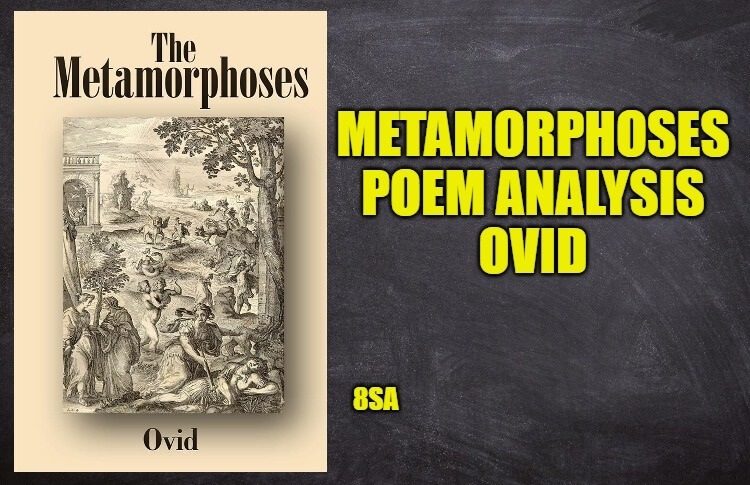What is the summary of the poem Metamorphoses written by Ovid? Information about the summary, characters, analysis of the poem Metamorphoses.

Metamorphoses
Metamorphoses is one of the most important works of the ancient Roman poet Ovid. In this epic poem, Ovid narrates mythological stories and legends, exploring the theme of transformation and change. The work is divided into fifteen books, and each book focuses on different stories and characters from Greek and Roman mythology.
The central theme of Metamorphoses is the idea of transformation and change, both physical and psychological. The work is filled with stories of gods and mortals who undergo various transformations, such as turning into animals, plants, or even stars. These metamorphoses are often the result of love, jealousy, revenge, or divine intervention.
Metamorphoses is also a reflection of Ovid’s own life and times. The poem was written during the reign of Emperor Augustus, a time of political and social upheaval in ancient Rome. Ovid’s work challenges the traditional values and beliefs of Roman society, and portrays the gods as capricious and unpredictable beings.
Overall, Metamorphoses is a complex and multi-layered work that explores a wide range of themes, from love and desire to power and mortality. It remains one of the most influential works of classical literature and has inspired countless writers and artists throughout the centuries.
Summary & Analysis
Metamorphoses is a complex and multi-layered epic poem by the ancient Roman poet Ovid. The work explores the theme of transformation and change, both physical and psychological, through a series of stories and legends from Greek and Roman mythology. The poem is divided into fifteen books, and each book focuses on different characters and their experiences of transformation.
The central theme of Metamorphoses is the idea that change is a fundamental part of life, and that transformation can be both beautiful and terrifying. Throughout the poem, Ovid portrays gods and mortals who undergo various transformations, such as turning into animals, plants, or even stars. These metamorphoses are often the result of love, jealousy, revenge, or divine intervention.
One of the most notable examples of transformation in Metamorphoses is the story of Daphne and Apollo. Daphne, a beautiful nymph, is pursued by Apollo, the god of the sun. To escape his advances, she prays to the gods for help and is transformed into a laurel tree. This story explores themes of love, desire, and the power of the gods.
Metamorphoses is also a reflection of Ovid’s own life and times. The poem was written during the reign of Emperor Augustus, a time of political and social upheaval in ancient Rome. Ovid’s work challenges the traditional values and beliefs of Roman society, and portrays the gods as capricious and unpredictable beings.
One of the key messages of Metamorphoses is that change is inevitable, and that even the gods themselves are subject to the forces of transformation. The poem also explores the idea of mortality, and the human desire for immortality and eternal life. Through the various stories and legends in the poem, Ovid presents a rich and complex portrayal of human nature and the human condition.
In summary, Metamorphoses is a complex and multi-layered epic poem that explores the theme of transformation and change through a series of stories and legends from Greek and Roman mythology. The poem challenges traditional values and beliefs, and portrays the gods as capricious and unpredictable beings. Through its exploration of themes such as love, desire, power, and mortality, Metamorphoses remains one of the most influential works of classical literature, and has inspired countless writers and artists throughout the centuries.
Characters
Metamorphoses is a vast and complex work, and there are hundreds of characters throughout the epic poem. Some of the most notable and memorable characters include:
- Apollo: The god of the sun, music, and poetry. He is often portrayed as a passionate lover, and is involved in several of the stories throughout the poem.
- Daphne: A nymph who is pursued by Apollo. She prays to the gods for help and is transformed into a laurel tree to escape his advances.
- Narcissus: A beautiful youth who falls in love with his own reflection and is transformed into a flower as punishment.
- Medusa: A Gorgon who is turned into a monster with snakes for hair as punishment for defiling the temple of Athena.
- Orpheus: A musician who goes to the underworld to retrieve his beloved wife Eurydice. He is ultimately unsuccessful and is torn apart by the Maenads.
- Pygmalion: A sculptor who falls in love with a statue he has created and prays to Venus to bring it to life. Venus grants his wish and the statue becomes his beloved wife.
- King Midas: A king who is granted the power to turn everything he touches into gold. He soon realizes the consequences of his greed and begs to be relieved of the power.
- Hercules: A demigod who performs twelve labors as penance for killing his wife and children in a fit of madness.
These are just a few of the many characters that populate the world of Metamorphoses. Each character has their own unique story and personality, and together they form a rich tapestry of mythological tales and legends.